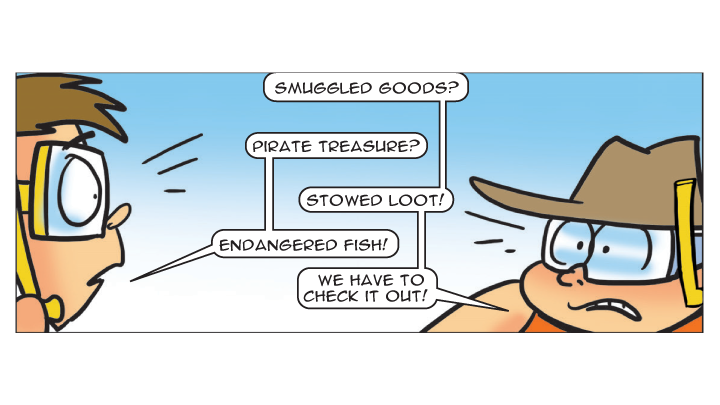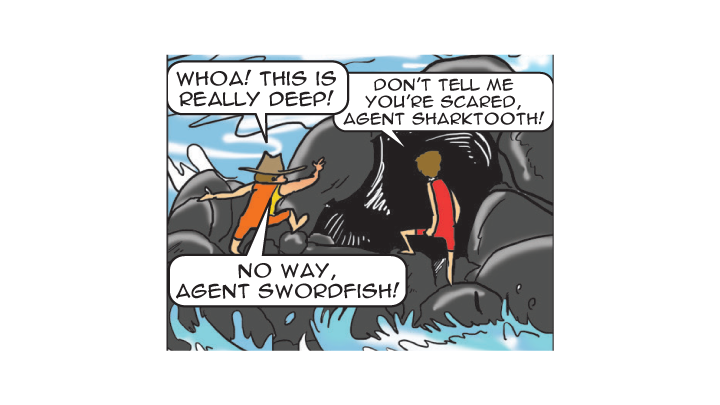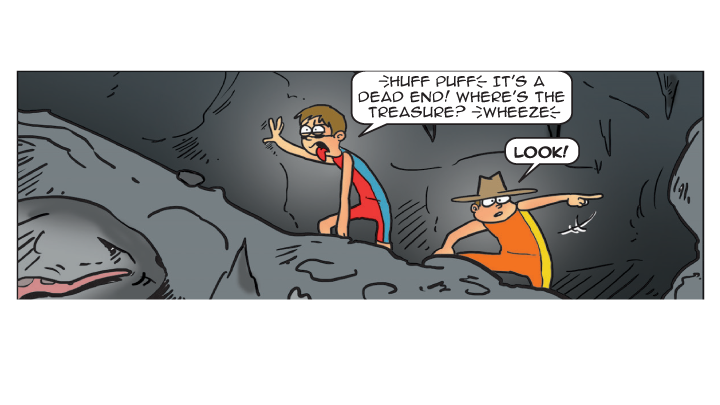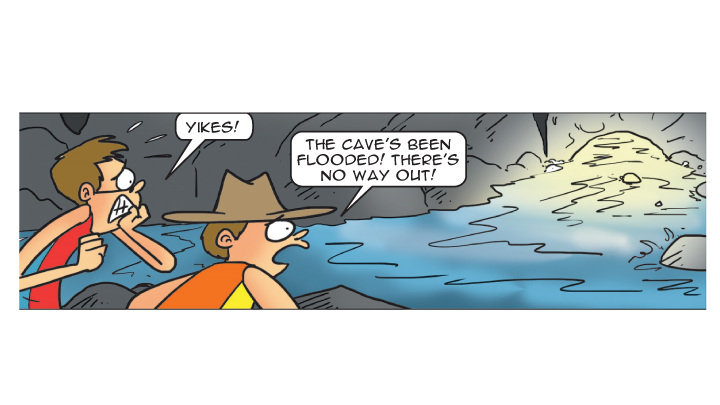

















It’s my birthday, Tinkle fans! But I’m not expecting any gifts from anyone. Instead, I am the one giving everyone a gift—the gift of knowledge! In particular, the knowledge of how scientists gain knowledge (a process that Rahul and I, the Daring Detectives, use to solve cases as well). The scientific method is a process scientists use to investigate the unknown and answer questions.
Step 1: Clearly lay out the issue/problem you want to study and investigate
Something about the world or the way it works must have you intrigued. I’m sure you must have thought, “How does that work?” or “What does this do?” This is your starting point.
British scientist and mathematician Isaac Newton wanted to investigate light and colours. He asked, “Where does colour come from?” This was his starting point.
Now, let me give you an example from one of the Daring Detectives’ famous cases. Rahul and I were holidaying at a fancy beach resort when we saw this:
Do you see how we instantly and clearly laid out a problem we wanted to investigate? What were those two suspicious individuals carrying out of a cave in the sea?
Step 2: Make a hypothesis or a prediction
A prediction that could possibly be the answer to the question you are asking or the solution to the problem you want to study is a hypothesis.
Over 2,000 years before Newton investigated light and colours, the Greek philosopher Aristotle stated that all colours came from heaven. They came from lightness and darkness and were related to the four ‘elements’ of water, air, earth and fire. This was the commonly held belief during Newton’s time. Newton, however, differed. He believed that colours indeed came from the Sun’s light, but if the Sun’s light was made up of just one type of rays, he wrote, there would be only one colour in the whole world. His hypothesis, therefore, was that Sun’s light was made of different rays that were probably the source of colour.
In our thought-provoking detective case, we came up with numerous hypotheses (because why have one hypothesis when you can have more?). What were the two fishy people carrying? Here are some of our predictions: 

Step 3: Gather the evidence or data needed for your hypothesis
How do you know if your hypothesis is true? You need evidence to prove it. Scientists gather evidence by making observations in the natural world, conducting lab experiments, or creating computer models that test their hypothesis.
Newton conducted many experiments with light to figure out where colours came from. On a bright, sunny day, he darkened his room and made a slit in his window shutter. He allowed one beam of sunlight to enter. He then placed a glass prism in its path. The single light beam disappeared into the prism and emerged as a band of rainbow colours! Intrigued, he placed another prism in the path of the rainbow colours. They went through the prism and emerged again as a single beam of white light.
In our daredevil case, Rahul and I actually went to the cave to find out what suspicious happenings were going on there. 



Step 4: Analyse and interpret your data
Scientists analyse the results of the many experiments they conduct. Does the data show a pattern of results? Is there a clear connection between the data and the hypothesis?
In Newton’s case, were the rainbow colours within the beam of sunlight or were they formed by the prism? Newton conducted many more experiments with light to confirm this and found that the colours were not generated by any external object or force. Therefore, all the data showed the same pattern of results.
The result of Rahul and my daring expedition into the cave was this monumental discovery:
Aha! See, our discovery led to another question that we wanted an answer to! We were so thorough in the scientific method that we had to use it again!
Step 5: Draw your conclusion
Scientists’ data will either prove or disprove their hypothesis. Either way, a valuable discovery would be made.
Newton found that sunlight was made up of seven colours—red, orange, yellow, green, blue, indigo and violet. After 2,000 years of believing Aristotle’s assumption, Isaac Newton’s scientific discovery replaced our understanding of light and colour.
As for Rahul and me, we got the, er, answer to our question almost immediately. 

Yes, the cave was flooded by the high tide, which was probably how the instruments were used for monitoring the sea level. But then we were also stuck inside the cave.
So, what conclusion did we draw from this fantastic case that we totally solved? Check out the story ‘Secret of the Sea Cave’ in Defective Detectives 4: Loonus Maximus to find out!
Sources: